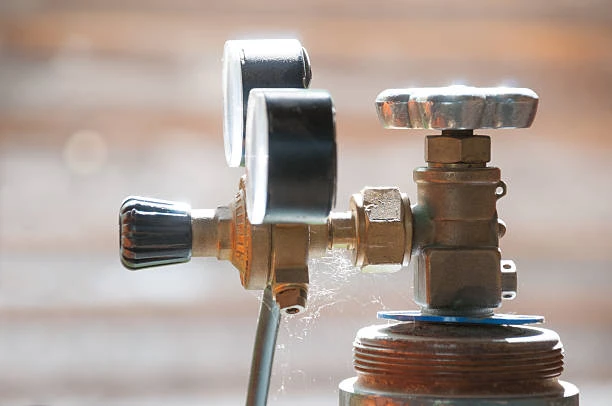A valve issue at Plant Vogtle recently led to the temporary shutdown of Unit 3, one of the United States’ newest and most advanced nuclear reactors. This unexpected halt in operations underscores the critical role that even the smallest components, like valves, play in the safe and efficient functioning of nuclear power plants.
This article examines the details of the incident, the measures taken to resolve it, and the broader implications for the nuclear energy sector.
Overview of Plant Vogtle and Unit 3
Plant Vogtle, located in Georgia, is home to four nuclear reactors, with Unit 3 being the first new nuclear unit built in the United States in over 30 years. It uses cutting-edge AP1000 technology and boasts advanced safety features.
Key Features of Unit 3:
- Technology: AP1000 Pressurized Water Reactor (PWR).
- Capacity: Over 1,100 MW, enough to power 500,000 homes.
- Safety Systems: Passive safety mechanisms designed to function even without external power.
The reactor plays a vital role in the region’s energy grid, providing clean, carbon-free electricity.
Details of the Valve Issue
The incident began when monitoring systems detected irregularities in a valve within the reactor’s cooling system. This valve issue necessitated an immediate response to ensure the safety and integrity of the reactor.
What Happened?
- Component Affected: A critical valve in the reactor’s coolant loop.
- Nature of the Issue: The valve failed to open and close as expected, disrupting the coolant flow essential for regulating reactor temperature.
- Cause: Preliminary investigations suggest material fatigue or a mechanical fault as the root cause.
Immediate Actions Taken:
- Automatic Shutdown: Unit 3 entered a safe shutdown mode as part of its design to address such anomalies.
- Inspection: Engineers isolated and inspected the faulty valve to determine the exact issue.
- Repairs: The component was replaced and tested under simulated conditions before restarting the reactor.

Impacts of the Shutdown
Operational Impact:
The temporary shutdown of Unit 3 reduced Plant Vogtle’s overall power generation capacity, requiring adjustments to the regional energy grid to maintain supply stability.
Financial Implications:
Unplanned outages can result in additional costs for repairs, inspections, and temporary power procurement from alternative sources.
Public and Regulatory Attention:
Incidents involving nuclear plants often attract heightened scrutiny from regulators and the public. Southern Nuclear, the operator of Plant Vogtle, emphasized transparency in addressing concerns related to safety and reliability.
Resolving the Valve Issue
The successful resolution of the valve issue demonstrates the effectiveness of modern nuclear safety protocols.
Steps Taken:
- Thorough Diagnostics: Advanced monitoring and diagnostic tools identified the exact fault.
- Component Replacement: The faulty valve was swapped out for a new, more robust component.
- System Testing: Comprehensive testing ensured the repaired system met all safety and operational standards.
- Reactor Restart: Unit 3 resumed operations gradually, under close supervision.
Lessons Learned:
- Enhanced Monitoring: Additional sensors will be installed to detect potential valve issues earlier.
- Maintenance Schedules: The incident highlighted the need to revisit and potentially shorten maintenance cycles for critical components.
Broader Implications for Nuclear Power
This event serves as a reminder of the importance of rigorous maintenance and monitoring in nuclear facilities. While modern reactors are designed with extensive safety redundancies, minor mechanical failures like a valve issue can have significant operational implications.
Ensuring Long-Term Reliability:
- Investment in Materials: Using advanced, fatigue-resistant materials for components like valves.
- Real-Time Data Analysis: Leveraging AI to predict and prevent potential failures.
- Staff Training: Continual training for operators and engineers to address complex mechanical systems.
Public Confidence in Nuclear Energy:
Nuclear power remains one of the most reliable and environmentally friendly energy sources. Transparent handling of incidents like this builds public trust and reinforces confidence in the technology.
Conclusion
The valve issue at Plant Vogtle’s Unit 3 serves as a testament to the challenges and responsibilities of operating a nuclear power plant. The swift response by Southern Nuclear demonstrates the industry’s commitment to safety and reliability.
While the temporary shutdown was inconvenient, it also provided valuable insights into improving the maintenance and design of critical components. With the lessons learned from this incident, nuclear facilities can continue to enhance their systems, ensuring consistent and safe energy generation for the future.
FAQs About Valve Issues in Nuclear Reactors
1. What is a valve issue in the context of a nuclear reactor?
A valve issue typically refers to a malfunction or irregularity in a valve that regulates critical processes like coolant flow, steam control, or pressure management in a reactor.
2. How are valve issues detected in nuclear plants?
Advanced monitoring systems, including sensors and real-time diagnostics, detect irregularities in valve performance.
3. Are valve issues common in nuclear reactors?
While rare, valve issues can occur due to wear and tear, material fatigue, or unforeseen mechanical faults. Regular maintenance minimizes such risks.
4. How do nuclear reactors handle valve issues to ensure safety?
Modern reactors like Unit 3 have automated safety systems that initiate shutdowns when anomalies, such as valve issues, are detected.
5. What improvements can prevent future valve issues?
Enhancements include using more durable materials, integrating real-time monitoring systems, and updating maintenance schedules to address wear and tear proactively.